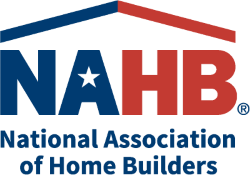NAHB: Home Builders Warn of Significant Affordability Declines

Housing affordability posted a modest gain for average conditions in the first quarter of 2022 as a strong jump in national median income helped to offset a gradual rise in interest rates. However, home builders warn of current deteriorating conditions as a sharp jump in mortgage rates in March and April coupled with ongoing building material supply chain disruptions, labor shortages and high inflation drive up housing costs.
According to the National Association of Home Builders (“NAHB”)/Wells Fargo Housing Opportunity Index (“HOI”), 56.9% of new and existing homes sold between the beginning of January and end of March were affordable to families earning the U.S. median income of $90,000. While this is up from the 54.2% of homes sold in the fourth quarter of 2021, current market indicators point to worsening affordability conditions.
The first quarter HOI was calculated based on the following key factors:
- An average quarterly interest rate of 3.86%, up 70 basis points from the previous quarter
- A 2022 median income of $90,000, up from last year’s $79,900.
- A national median home price of $365,000, up $5,000 from the fourth quarter of 2021 and a whopping $45,000 from the first quarter of 2021.
Affordability Dips Below 50% Based on Recent Mortgage Rates
Keeping all other factors the same and calculating nationwide affordability conditions based on end of April mortgage rates of 5.11% instead of the first quarter average of 3.86%, the HOI would have fallen from 54.2 in the fourth quarter of 2021 to 48.7 today.
This means that based on where the housing market stands today, just 48.7% of homes sold in the first quarter were affordable to median-income families, the lowest affordability level recorded on the HOI since the beginning of the revised series in the first quarter of 2012.
“The first quarter reading is a backward gauge, as surging interest rates, ongoing building material supply chain constraints and labor shortages continue to raise construction costs and put upward pressure on home prices,” said NAHB Chairman Jerry Konter, a home builder and developer from Savannah, Ga.
Every quarter-point hike in mortgage rates means that 1.3 million households are priced out of the market for a nationwide median priced home. And with the Federal Reserve moving aggressively to raise short-term interest rates and reduce its holding of mortgage-backed securities to combat inflation that is running at a 40-year high, mortgage rates are expected to rise even further.
“Looking at current market conditions, affordability woes continue to mount as rising interest rates and home building material costs that are up 20% year-over-year are causing housing costs to rise much faster than wages,” said NAHB Chief Economist Robert Dietz. “The HOI falling below 50 using these real-time estimates is an indication of significant housing affordability burdens, particularly for frustrated, prospective first-time buyers. The best way to ease growing affordability challenges is for policymakers to address ongoing supply chain disruptions that will allow builders to construct more affordable homes.”
The Most and Least Affordable Markets in the First Quarter
Lansing-East Lansing, Mich., was the nation’s most affordable major housing market, defined as a metro with a population of at least 500,000. There, 92.3% of all new and existing homes sold in the first quarter were affordable to families earning the area’s median income of $89,500.
Top five affordable major housing markets:
- Lansing-East Lansing, Mich.
- Indianapolis-Carmel-Anderson, Ind.
- Scranton—Wilkes-Barre, Pa.
- Rochester, N.Y.
- Dayton-Kettering, Ohio
Meanwhile, Wheeling, W.Va.-Ohio., was rated the nation’s most affordable small market, with 97.3% of homes sold in the first quarter being affordable to families earning the median income of $75,400.
Top five affordable small housing markets:
- Wheeling, W.Va.-Ohio
- Cumberland, Md.-W.Va.
- Elmira, N.Y.
- Utica-Rome, N.Y.
- Davenport-Moline-Rock Island, Iowa-Ill.
For the sixth straight quarter, Los Angeles-Long Beach-Glendale, Calif., remained the nation’s least affordable major housing market. There, just 8.3% of the homes sold during the first quarter were affordable to families earning the area’s median income of $90,100.
Top five least affordable major housing markets—all located in California:
- Los Angeles-Long Beach-Glendale
- Anaheim-Santa Ana-Irvine
- San Francisco-San Mateo-Redwood City
- San Diego-Chula Vista-Carlsbad
- Stockton
The top five least affordable small housing markets were also in the Golden State. At the very bottom of the affordability chart was Salinas, Calif., where 9.2% of all new and existing homes sold in the first quarter were affordable to families earning the area’s median income of $90,100.
Top five least affordable small housing markets—all located in California:
- Salinas
- Santa Maria-Santa Barbara
- San Luis Obispo-Paso Robles
- Napa
- Santa Cruz-Watsonville
Please visit nahb.org/hoi for tables, historic data and details.
Source: National Association of Home Builders

